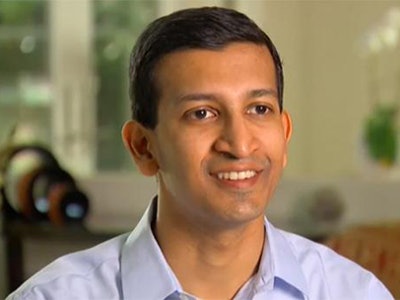Low-income students could have a better shot at upward mobility if they had greater access to more colleges with a record of good student outcomes, but “income segregation” is getting in the way, several scholars argue in a new study released Monday.
Titled “Mobility Report Cards: The Role of Colleges in Intergenerational Mobility,” the study found that children from both poor and affluent families ended up with “very similar earnings” based on the college they attended.
 Economics professor Raj Chetty
Economics professor Raj ChettyFor instance, when you look at college students from different socioeconomic backgrounds in the United States as a whole, those from the highest-income families end up 30 percentiles higher in the earnings distribution than those from the lowest income families, the paper states.
However, the situation changes when students from the lowest- and highest-income families attend the nation’s top colleges — the difference in their earnings drops to only 7.2 percentiles, or 76 percent less than what it is at the national level. Income gaps among graduates from lower-ranked colleges are also relatively small, the paper states.
“The small gap in earnings outcomes between students from high- vs. low-income families within each college shows that most colleges successfully ‘level the playing field’ across students with different socioeconomic backgrounds, either because they select children of relatively uniform ability or because they provide greater “value-added” for children from low-income families,” the paper argues.
Regardless of which of those two mechanisms is employed, the results suggest that students from low-income families are not in over their heads academically or “mismatched” at selective colleges, the paper argues.
The problem is low-income students are not being admitted to the nation’s selective universities at a rate that is on par with their more affluent counterparts — a form of “income segregation” that the scholars argue is “comparable to the degree of income segregation across neighborhoods in the average American city.”
For instance, when you look at “Ivy-Plus” colleges — that is, the eight Ivy League Colleges, plus the University of Chicago, Stanford, MIT and Duke, there are more one-percenters — or students from the top one percent of income distribution, who number 14.5 percent collectively at these institutions — than there are in the bottom half of income distribution, who represent 13.5 of all students at the institutions.
“Only 3.8 percent of students come from the bottom quintile of the income distribution at Ivy-Plus colleges,” the paper states. “As a result, children from families in the top 1 percent are 77 times more likely to attend an Ivy-Plus college compared to the children from families in the bottom quintile.”
The paper — produced by economics professors Raj Chetty, John N. Friedman, Emmanuel Saez, and Danny Yegan, of Stanford, Brown, the University of California at Berkeley, respectively — uses “mobility rates” to assess the degree to which universities successfully move students from the bottom quintile to the top quintile of income. The rates are the product of a college’s “access” — or the fraction of students from the bottom quintile — and its “success rate” — which is the fraction of such students who make it to the top quintile.
The average bottom-to-top-quintile rate is 1.7 percent, the paper states, but there is substantial variation.
To calculate incomes, the researchers teamed up with the U.S. Treasury Department to examine tax data for college students from 1999 through 2013, as well as tax data for their parents and college enrollment data.
The paper credits mid-tier public institutions with having the highest bottom-to-top-quintile mobility rates — that is, those that have both high success rates and access for low-income students.
For instance, the paper states that many campuses of the City University of New York (CUNY), certain California State colleges, and several campuses in the University of Texas system have mobility rates above six percent. It also states that certain community colleges, such as Glendale Community College in Los Angeles, also have very high mobility rates.
The “Ivy-Plus” schools, on the other hand, had mobility rates of only 2.2 percent, slightly above the national median, the paper states.
And flagship public institutions have “fairly low mobility rates” — on average 1.7 percent — because many of them have “relatively low rates of access,” the paper states.
“These differences in mobility rates raise the possibility that increasing low-income access to colleges with good student outcomes could increase the contribution of higher education to upward mobility,” the paper concludes.
The paper argues that while many efforts to expand low-income access to elite colleges, it could prove more critical to expand access to high-mobility-rate colleges. It cites California State–Los Angeles, the City University of New York, and the University of Texas–El Paso as examples of such colleges.
“These colleges have very good outcomes while admitting large numbers of low-income students,” the paper states.
And since they are not that selective, it could mean that they have high value-added relative to other colleges with similar applicant pools, the paper states.
“If these colleges do have high value-added, they could provide a scalable model for increasing upward mobility for large numbers of students,” the paper concludes, noting that the schools have average annual instructional expenditures of about $8,000 per student, which is “far lower” than average instructional expenditure of $54,000 per student at elite private colleges.
Jamaal Abdul-Alim can be reached at [email protected] or you can follow him on Twitter @dcwriter360.















